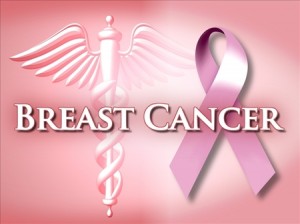
Women about to have breast cancer surgery may want to pay extra attention to the radiation treatment they could be offered afterward.
A new study shows a new and increasingly popular treatment called brachytherapy is tied to more wound and skin complications than the standard radiation technique.
Yet as many as one in six women on Medicare, the government's health insurance program for people over 65, end up getting the new therapy following breast-conserving surgery, researchers found.
"We were very surprised to see that brachytherapy is as commonly used as it is, particularly given that there is no clear evidence that it offers better cancer outcomes," said Dr. Cary P. Gross of Yale University School of Medicine in New Haven, Connecticut. His findings were published Monday in the Journal of Clinical Oncology.
Not all patients will benefit from radiation treatment, but in many cases doctors recommend it to reduce the chance that the cancer will return.
 Typically the whole breast is irradiated from the outside over several weeks, but in brachytherapy the radiation is delivered from inside the breast.
Typically the whole breast is irradiated from the outside over several weeks, but in brachytherapy the radiation is delivered from inside the breast.With the MammoSite device, for instance, a small balloon is inflated in the cavity that remains after the tumor is removed. It delivers high-dose radiation in less than a week and has been used on more than 50,000 women so far, according to its Massachusetts-based manufacturer Hologic.
But there is no solid research showing brachytherapy is a safe and effective alternative to whole-breast radiation, Gross and his colleagues say.
In fact, previous research has found a higher rate of breast removal and acute complications among women who get the new treatment instead of the traditional one.
The new study is based on nearly 30,000 Medicare beneficiaries who underwent breast-conserving surgery in 2008 or 2009.
It found 16 percent had brachytherapy, although rates varied widely across the country - from none to more than 70 percent in some areas.
"This strongly suggests there are providers in those regions who are playing a major role in steering women toward brachytherapy, and we find that to be very concerning," Gross told Reuters Health.
He said whole-breast radiation costs about $6,000, whereas Medicare shells out roughly $12,000 for brachytherapy.
After accounting for factors such as patients' income, overall health and whether they had chemotherapy, the researchers found 35 percent of women who got brachytherapy had a complication over the following year - usually an infection or other problem related to the wound or skin.
By contrast, only 18 percent of women getting whole-breast radiation experienced a complication. That means that for every 100 women who undergo radiation therapy after breast cancer surgery, there are 17 extra complications after brachytherapy compared with the standard treatment.
Hologic declined to comment on the new findings.
Unproven technology
The new findings add to a report from 2010 showing that from 2001 to 2006, the use of brachytherapy after breast surgery rose steadily from less than one percent of cases to 10 percent.
"There is often a great deal of excitement for new treatments, but just because something is new doesn't mean it's better," said Gross. "Women should ask their providers to discuss with them, ‘What do we really know about the risk and benefits of different treatment options?'"
An editorial published with the report echoes Gross's concerns, although it adds that the study was observational and so is less robust than an experiment comparing the two treatments head-to-head.
In the editorial, entitled "When Hope Hinders Science and Patient-Centered Care", Dr. Jennifer Malin of the University of California, Los Angeles, notes that the regulatory requirements for new medical devices do not include proving that they improve patient outcomes - a requirement when companies apply for drug approvals.
"After a capital investment has been made to acquire the device (…) uptake of the new technology occurs even in the absence of evidence of improved or even comparable outcomes," she writes.
About one in eight women will be diagnosed with breast cancer at some point in her life, according to the American Cancer Society, but only a minority die from the disease.
After breast-conserving surgery, up to 40 percent of women see the cancer return, but that number can be reduced to about 10 percent with external-beam radiation of the whole breast. Common side effects are swelling and redness.
According to Gross, the benefits of radiation outweigh the harms for younger women, but some older women may safely skip the treatment.
"The first question (to ask your doctor) is, ‘Do I need radiation at all?'" Gross said. "The second question is, ‘What are the risks and benefits of the different radiation treatments?'"
0 comments:
Post a Comment